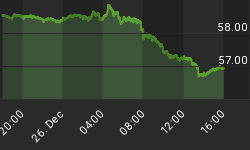U.S. infrastructure is in desperate need of investment—a fact no one denies, including government officials, experts and the public at large. With most existing systems built decades ago, economists now suggest that project delays, rising maintenance costs and safety issues are holding us back from better economic performance.
It was all supposed to be resolved by Trump’s campaign pledge to spend well over a trillion dollars to repair America’s crumbling infrastructure while making the country “great again”.
In February, Trump proposed a scheme that, he claimed, would boost the country’s infrastructure with $1.5 trillion in spending over the next decade. But since then, not much has been done toward achieving that goal, and now we’ll have to wait and see what the plan is after mid-term elections.
But even $1.5 trillion won’t be enough, according to the American Society of Civil Engineers, which estimatess that it would take spending of around $4.5 trillion by 2025 to fix the country's roads, bridges, dams, and other infrastructure.
In it'ss last year, Infrastructure Report Card—issued every four years--ASCE gave U.S. infrastructure an overall grade of D+, saying that the government and private sector will need to increase investment from 2.5 percent to 3.5 percent of GDP by 2025 to raise its overall infrastructure score.
“If the government continues on the same trajectory it is currently, it will result in $3.9 trillion in losses to the GDP and 2.5 million jobs lost”, the report said.
Consulting firm McKinsey says the economy would benefit from an increase in spending of 1 percent of GDP, which could add 1.5 million new jobs to the mix.
Among the infrastructure categories, roads, dams, energy and transit were the most poorly rated. Related: The New Paradigm In Monetary Markets
On the state level, West Virginia and Mississippi were the worst U.S. states, with the most deplorable infrastructure.
In Mississippi, 51 percent of the roads are in “mediocre” condition and 13 percent of bridges are deficient. In West Virginia, 36 percent of the state’s major roads are in either “poor” or “mediocre” condition, while half of the bridges need significant repairs.
In addition to age and lack of investment, U.S. infrastructure is apparently being threatened by cyber-attacks from abroad, and while they were less frequent before, now they are almost daily.
In 2013, an Iranian hacker group claimed responsibility for an attack on the New York dam.
In March this year, the U.S. administration blamed the Russian government for a campaign of cyberattacks stretching back at least two years that targeted the U.S. power grid.
Earlier this month, the U.S. intelligence community warned that Russia, China, Iran and North Korea are launching daily cyber strikes on the computer networks that govern American infrastructure. They pointed out huge weakness in the U.S. infrastructure, that the dams, traffic controls and power grids that can be accessed by anyone.
To increase efficiency over the past two decades hundreds of thousands of analog controls in these facilities have been replaced with digital systems. But it’s also made them much more vulnerable.
The American economy may look good by the numbers right now, but without better infrastructure, there’s only so far it can go—and when it’s increasingly vulnerable to attack at the same time, crumbling may end up being the least of worries.
By Michael Scott for Safehaven.com
More Top Reads From Safehaven.com

















